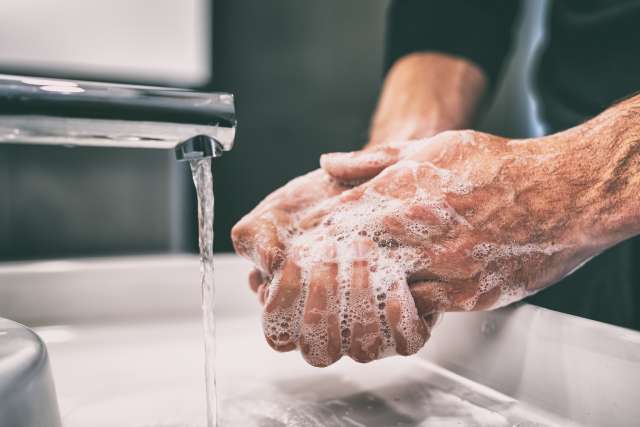Wash your hands, mask up, stay home if you’re sick and keep up to date on your vaccines.
During the height of the COVID-19 pandemic, these measures to prevent the spread of the virus became second nature to many of us. Now, in the holiday season, when people gather in larger numbers indoors, health care providers are reminding the public about the importance of staying vigilant, especially if we will be around people vulnerable to serious illness.
“We’re at a different point in terms of the numbers of COVID-19 cases right now, although it does look like we’re starting to see a surge from Thanksgiving,” says Otto Yang, MD, a physician in the Division of Infectious Diseases, Department of Medicine, Department of Microbiology, Immunology, and Molecular Genetics at UCLA Health.
“So, it means going back to basics in terms of preventing the spread of viruses, especially if you’re going to be around somebody that’s at high risk because of their age or immune status,” adds Dr. Yang, who also is a professor at the David Geffen School of Medicine at UCLA.
Flu, RSV on the rise
The Centers for Disease Control and Prevention on Dec. 14 reported that in the previous four weeks, hospitalizations among all age groups increased in the U.S. by 200% for influenza, 51% for COVID-19 and 60% for respiratory syncytial virus (RSV).
“We often brush off the flu as something that is just a nuisance,” Dr. Yang says. “But true flu is a very severe illness. In an average year in the United States, 30,000 to 40,000 people die of the flu. So, it’s not benign.”
He adds that RSV can cause serious illness in adults older than 60 and can be fatal to infants.
CDC health alert
The spike in hospitalizations has prompted the CDC to issue a Health Alert Network (HAN) Health Advisory to alert health care providers to low vaccination rates against influenza, COVID-19 and RSV.
“Low vaccination rates, coupled with ongoing increases in national and international respiratory disease activity caused by multiple pathogens, including influenza viruses, SARS-CoV-2 (the virus that causes COVID-19), and RSV could lead to more severe disease and increased healthcare capacity strain in the coming weeks,” the alert stated.
Simply put, low vaccination rates mean the viruses will spread faster and the risk to the population is higher, Dr. Yang says.
“There are still people in whom the COVID-19 vaccine doesn't work because their immune system is weakened by the fact that they've had a kidney transplant or lung transplant, or they're on severe immunosuppression because of cancer chemotherapy or to treat an autoimmune disease,” he adds. “And those people are at the mercy of the rest of us.”
Virus fatigue
Dr. Yang notes the dip in vaccination numbers is due in part to lower COVID-19 numbers, hesitancy of public health authorities to make unpopular recommendations such as wearing masks, and complacency.
“People have just gotten tired of thinking about it, tired of dealing with it, and just want to move on,” he says.
Ultimately, deciding whether to take precautions against contracting and spreading viruses is a personal choice.
“What you’re willing to tolerate in terms of the highest-risk situation would be unmasked in a closed room with a lot of people and poor ventilation. And the lowest-risk situation would be everyone with N95 masks gathering outdoors,” Dr. Yang says. “And probably, depending on your risk calculation, you fall somewhere in between.”




